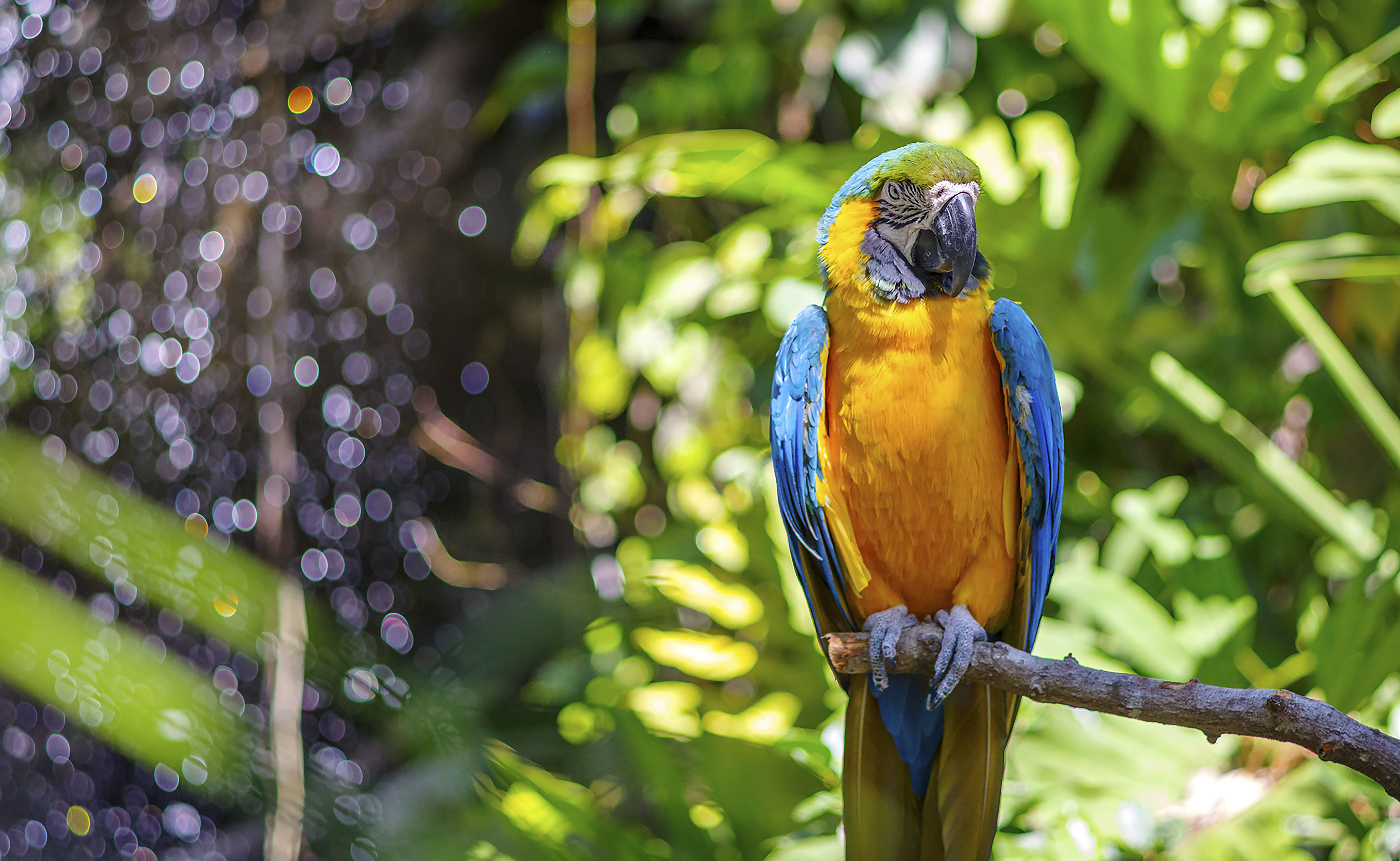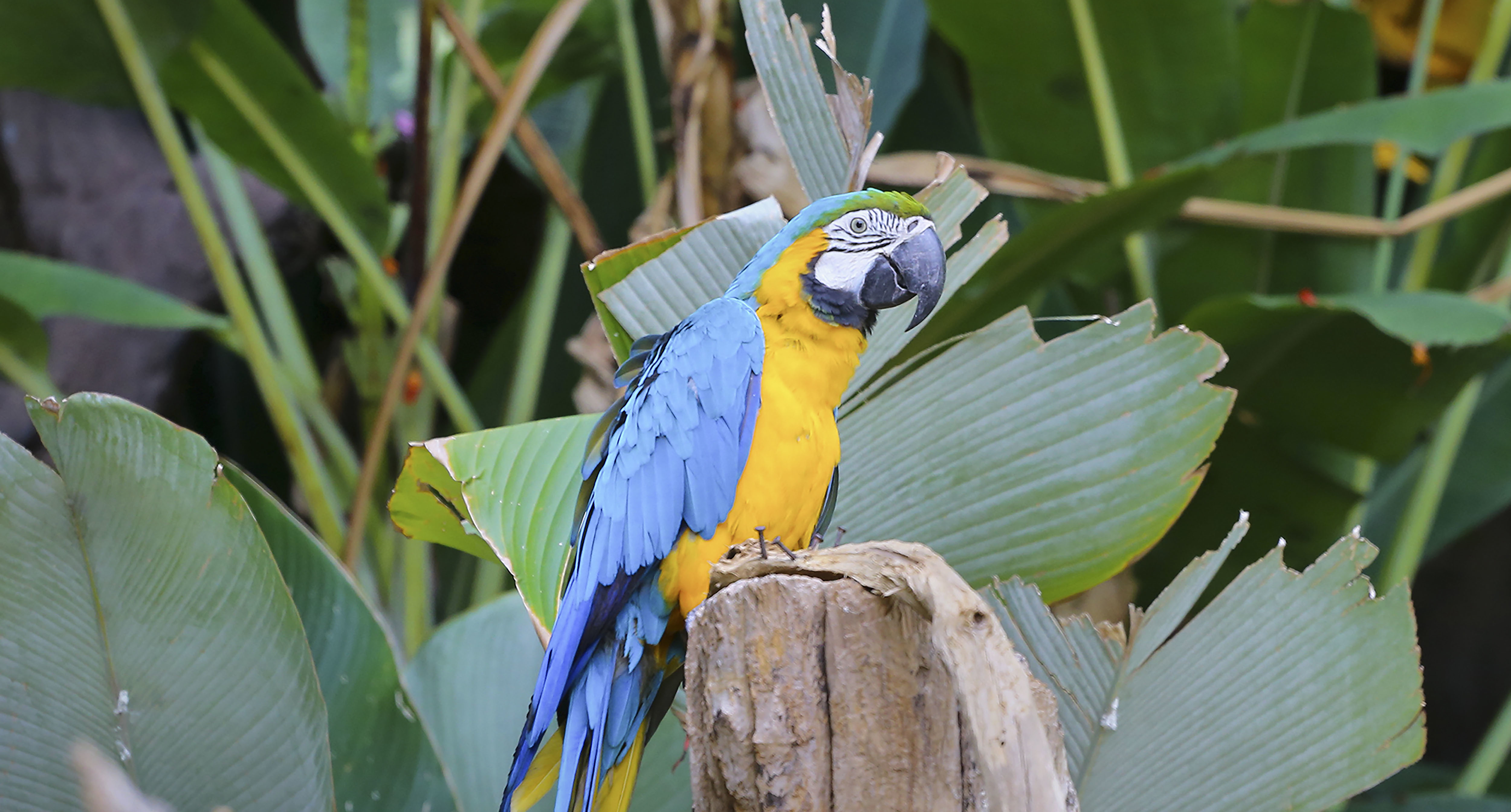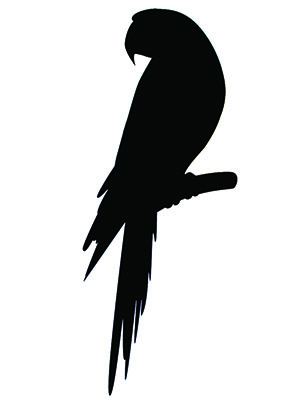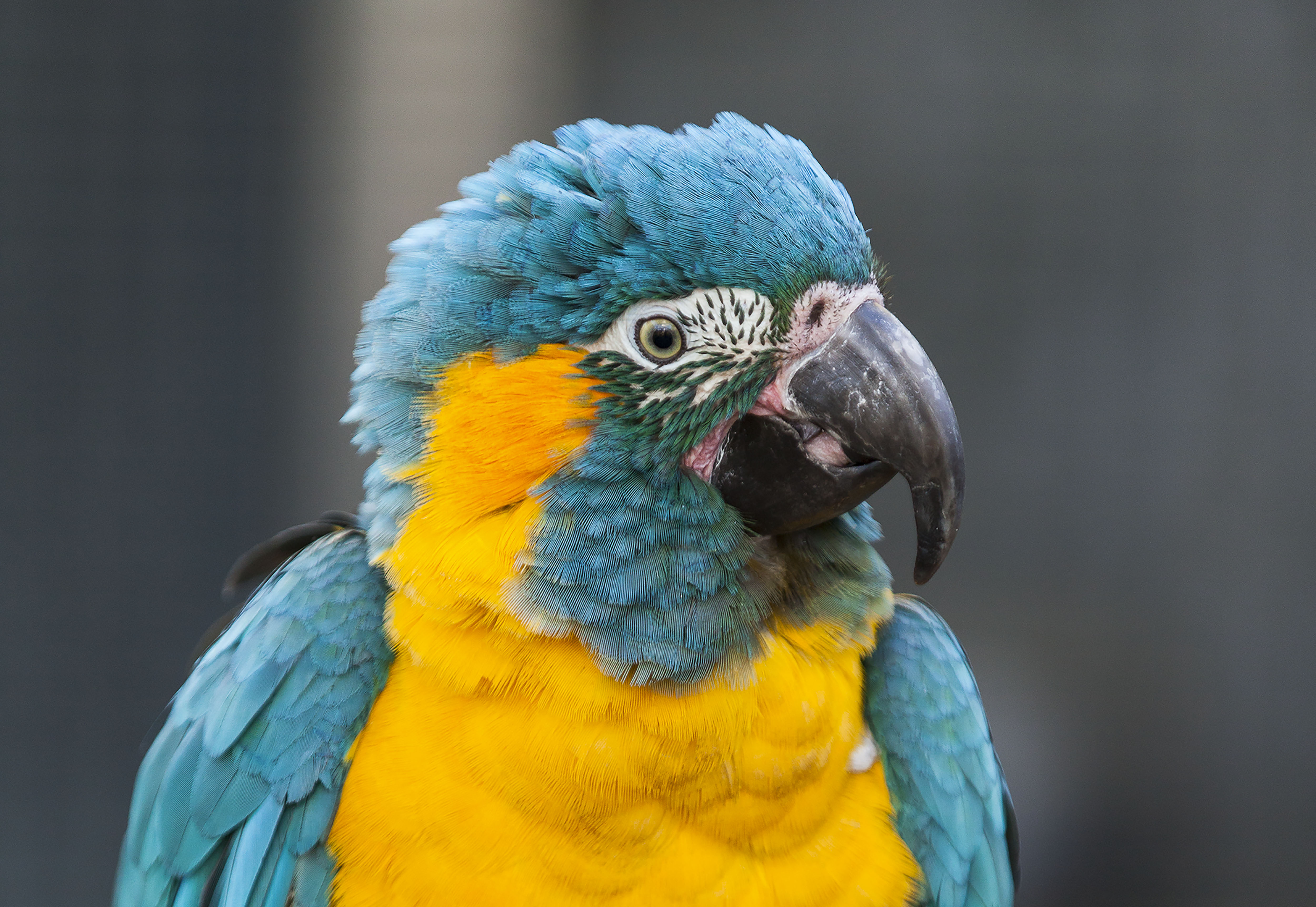Blue-Throated Macaw
(Ara glaucogularis)
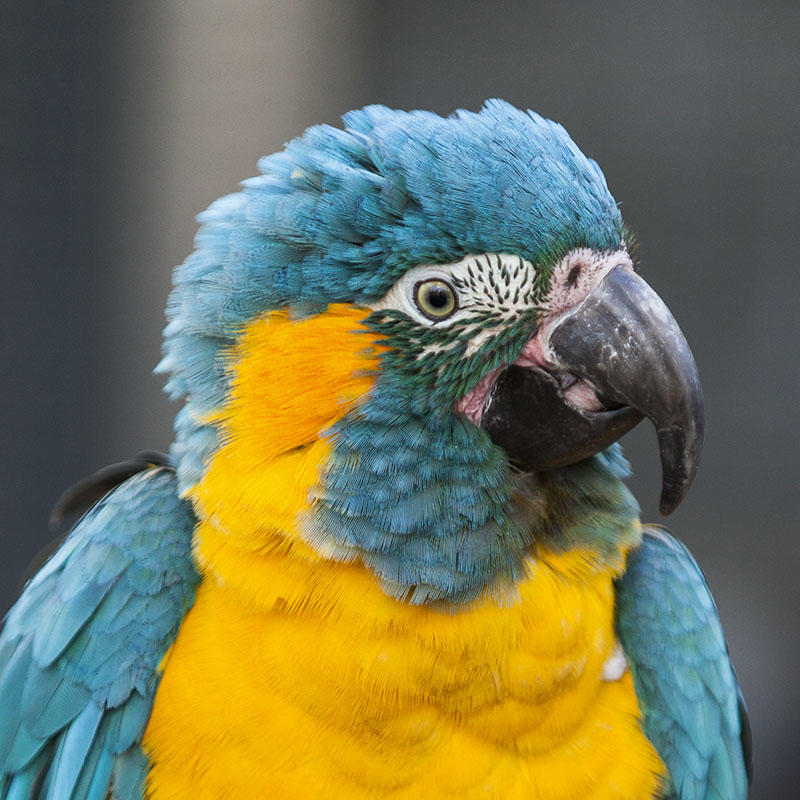
Southwestern Amazonian Moist Forests
STATISTICS
Length up to
85 cm
Weight up to
900 g
Lifespan
22 years
Wingspan
0.9 m
Arboreal - Diurnal - Flies - Social
Blue-throated macaws are native to north-central Bolivia and are one of eight extant species of long-tailed macaws. Turquoise and bright yellow, they have 5 or 6 horizontal stripes of blue feathers which are unique and can be used to individually identify adults. Juvenile Blue-throated macaws have brown irises, which turn yellow as the birds mature, the amount of gold increasing with age after the age of 10.
This species prefers gallery forests featuring the Motacú palms, which are critical for its survival due to feeding and nesting in these trees. Instead of eating seeds and nuts like other macaws, Blue-throated macaws primarily eat the fruit of the large palms, in particular the Attalea phalerata, Acrocomia aculeata and Mauritia fleuxosa species. They are important seed dispersers for these trees.
A fairly monogamous bird, they tend to travel in pairs, but can occasionally be found in small groups. Choosing to construct their nests within the cavities of large palms, the Blue-throated macaw breeds once a year, provided environmental conditions are favourable. The female will lay 1 – 3 eggs and will incubate for 26 days.
BIODIVERSITY BENEFIT
Seed Dispersal
THREATS
Illegal Wildlife Trade
Legal and illegal exploitation for the national and international cage-bird trade.
Habitat Loss
Due to agricultural development.
Hunting
Hunted for decorative feathers in indigenous areas.
Predation
Adults can be preyed upon by a number of species in their ecosystem.
PROTECT THE WILDARK 100
